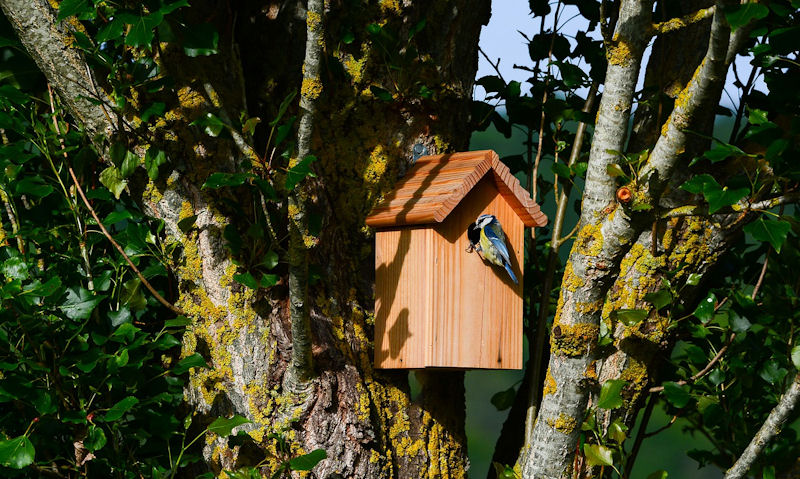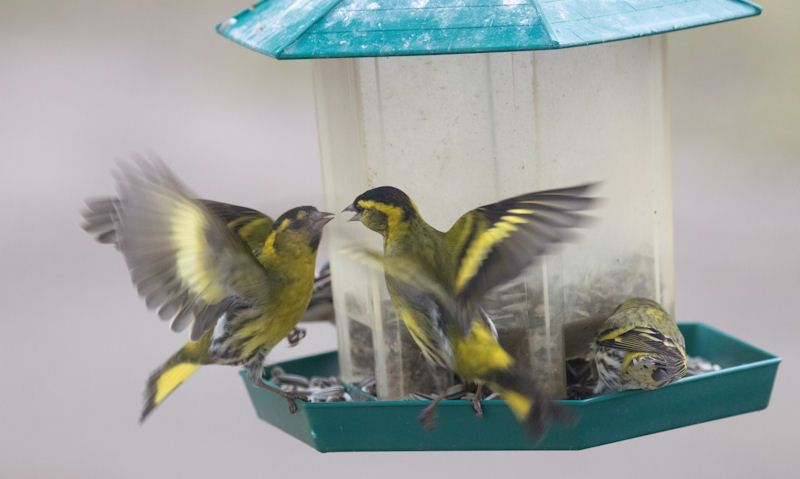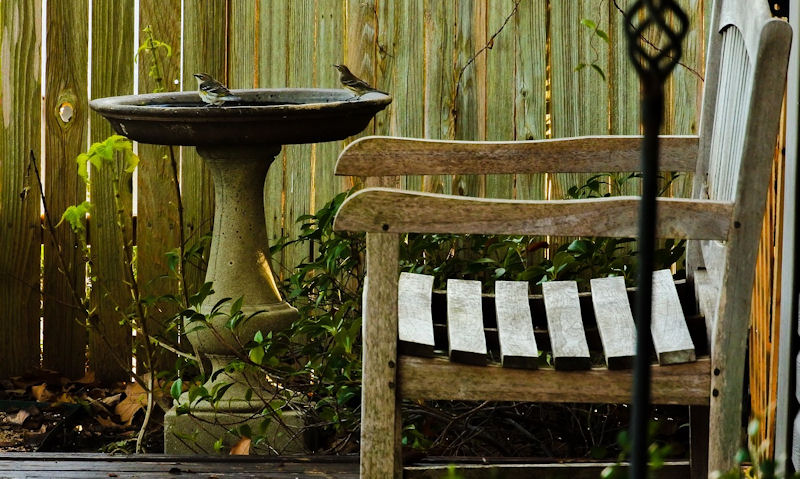Should I put nesting material in a bird box
Plain old empty bird boxes do feel like they need a little something to get things started, but don't be tempted to as wild birds will take care of it.
You can line the bird box with only a little nesting material, but really you shouldn't put nesting material in a bird box as there's more negatives to it than positives. Negatives being the material offered up by you is inadequate, or risk blocking the entrance hole, making it appear its occupied already.
Over only a few short days or a week or two wild birds build their nests in such a way it cannot be replicated by people.
Same goes for the kind of nesting material they use, because its not all about twigs or fine dried grass - human hair or animal fir can be involved in its constructions.
To put nesting material at the bottom of the bird box won't hurt, but birds would probably remove it before moving in.
Empty bird boxes can appear like they will never be used, but allow nature to take its course.
Overtime you'll have a few inklings, so before you know it a female bird would come and go at the entrance hole, with nesting material in her beak. But you can help things along by not actually adding the material - but simply placing it near to the bird box.
Birds build their own nests
Absolutely no need to help build a birds nest when they are perfectly capable of doing it themselves, come rain or shine.
I would say you can put a little nesting material in the bird box but nothing else. It is possible to use too much, so it can in fact be more a nuisance than anything else.
Birds build their own nests in a very unique, intricate way over a period of time.
It tends to be the female who builds a complex nest only over a few days, or up to a couple of weeks - so for human intervention it simply doesn't fit in with birds instincts out in nature.
To you, it could be twigs or dried grass, but in reality wild birds who nest in bird boxes use unique, intricate nesting material - something you would never think to use.
Remove old material
Maybe you can help get nesting birds started by laying a little twig, hay or straw on the base of the bird box, but it really isn't necessary.
But if you are about to begin the process of setting up an old bird box, be it after the nesting season or in time for roosting over winter - it may be a good idea to remove access material left behind by its previous occupants.
Actually, you really should remove this old nesting material as it would be in the way.
Birds and their young would of left the bird box after August, so you can begin to clean out the bird box after this time, while making sure to do a few checks to guarantee there are no occupants inside.
Remove all nesting material left behind by pulling it out through the roof or side panel access point - don't pull out nesting material via the bird box entrance hole as its sure to not be a good job on your part.
Material could deter birds
Birds build their nest in such a way it creates sort of hollow nest in the centre of the nesting material, build up inside the bird box.
That could be a reason alone not to attempt to build a nest yourself as you won't be able to replicate this important part of a genuine nest.
However, attempting to build a nest yourself with any amount of material could in turn deter wild birds from ever nesting; reason for that is because the bird box can appeal occupied.
Imagine, a wild bird views a nest box to nest in but sees material protruding out of the entrance hole. To a bird this can appear to be in use so they won't bother to disturb or risk a fight on the entrance hole.
I would say though to a Wren it would happily steel a bird box off a poor Robin.
Good reason not to put nesting material in a bird box then would be because it could deter any potential nesters - rather than encourage them to nest.
Own material could block hole
Anyone who intends to build a comfortable nest using material found in nature can do so quite easy, but you'd never be able to overcome the complex nature of a natural nest.
With all reasons mentioned thus far as to not to put anything in a bird box then, what else can go wrong is in fact the risk of blocking the entrance hole.
Its easily done while not being fully aware it could happen later.
But come wind or any other disturbance of any kind - with the material taking its time to settle in the box - it could just well begin to block the entrance hole birds enter though.
And if it doesn't block the entrance hole fully, your nesting material build be so high or too compact, there's possible no way they can enter the box fully.
Birds build their nest with a single twig or straw at a time, so unless you are prepared to replicate their technique - doing it yourself is going to cause issues.
Never imitate material used
I've mentioned it previously but allow me to go into more detail, but let me say wild birds use a series of unique material that you'd never be able to pick out in nature.
Its been known wild birds can be victims of population or littering themselves as pieces of plastic have been known to be used in their nests, built in nature.
And while you'd obviously won't use this rubbish, things like human hair or fine animal fir can also be used.
Building a nest out in nature or in this case, as birds build a nest within a nest box - does not mean twigs or grass only.
You'd never be able to replace what material they pick up in nature, nor would you be able to build a nest that is too their liking.
Leave it to the wild birds themselves then, so once they've left the bird box at the end of the nesting season - you can inspect how they built their nest for educational purposes only.
To summarise
People have put nesting material in a bird box with great success as it happens, but even with good intentions, nesting material can be removed.
You'd never be able to imitate the intricate structure of a wild bird nest built in nature, so don't bother to begin trying.
What you can do is leave a few fine twigs or straw at the bottom of the bird box, but whether they use it or not, is up to them.
Birds will remove old material if its a little, but won't bother to nest at all if its too much.
What else you could do then is leave fine twigs, straw, dry grass and even human hair near to the nest box, as they may end up using it.
To assist any potential nesters then could see you disrupt natural nesting behaviour, thus deterring birds rather than seeing them nest.
It could be the nest appears to be used, or the entrance hole could be blocked.
Leave it up to wild birds to take care of their nests, as its such a delicate operation, its something people simply cannot replicate.


